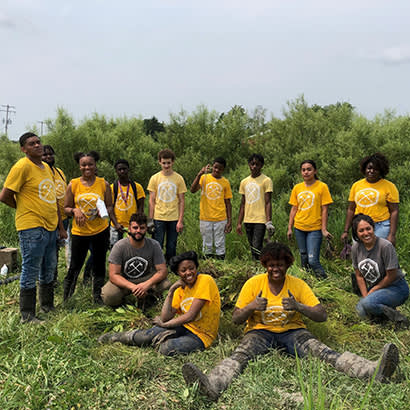
For an enhanced digital experience, read this story in the ezine.
How do we do this work without causing discomfort or disruption? This is the question I often receive from potential clients preparing to begin their journey of racial equity work in the environmental sector. My answer? You don’t.
By pure nature of the work, becoming a just, equitable and inclusive organization requires disruption — disruption of standard workplace practices that are rooted in white middle class norms, and therefore, tend to primarily serve that demographic.
With many individuals within environmental organizations (or park and recreation agencies) finding discomfort with even the very usage of race-based words, it’s really no surprise how little progress has been made upon the actual problem of racial homogeneity in the field. If you can’t talk about it, how will you solve for it?
What I have found through my own work as a company culture consultant is that the most effective way to reach the desired future state of being an equitable and just organization requires the following five steps:
1. Make peace with the reality that this work does not have a finish line.
I often compare this work to getting healthy. We can drink lots of water, eat heaps of leafy greens and manage our stress, but the moment we stop incorporating healthy practices, our health declines. The same is true for the health of our organizational culture. Being anti-oppressive must be baked into everything an organization does. Consequently, if we try to cheat the process, we may find ourselves doing irreparable harm.
2. Get a benchmark of where you are.
Don’t just track your diversity metrics. Track your inclusion and belonging metrics. Make sure the organizational culture assessment you are conducting is holistic and intersectional. You’ll want to be able to compare the responses from your survey participants by social demographics. Why is this important? First, the data helps address common pushback from individuals who feel the problem “isn’t that bad” or, worse yet, don’t believe there is a problem at all. Second, it gives your organization insight into where you are thriving and where you have areas of opportunity. As a bonus, it allows you to compare growth year to year as you reassess your organization.
3. Establish shared language.
We can’t solve a problem we don’t understand. We are all going to be at different places in terms of this work. Where we are is not an indication of our character or values, but simply the manifestation of what information we have been exposed to. In light of numerous bans on books and literature that tell the truth about our nation’s history and help make sense of how the societal inequities we are working to solve came to be, I fear the collective societal knowledge base will continue to decline, leaving future colleagues even more ill-informed about race than their predecessors. This casts an additional burden on organizations and agencies to provide education to their staff that will support their ability to contribute to a workplace culture where all can thrive.
4. Align to values and mission.
Another common pushback I hear from environmental organizations (conservation entities specifically) is the mindset that: “We are a conservation organization, not a social justice program.” To that, my reply is: “Yes, and you are also not an EMT [emergency medical technician] organization, but do you not require your field staff to secure training in first aid and CPR?” Anti-bias and anti-oppression education is no different. If done well, it provides us with information to help us manage our mindsets and behaviors and contribute positively to culture.
5. Fail forward.
Comb your organizational practices for attributes of white supremacy culture. Perfectionism, false sense of urgency, worship of the written word and many other characteristics tend to infect many of our organizations, and none of us are absolved. We must question what we think we know about professionalism, relationship with time, etc. If you are more concerned with looking like a good person rather than actually helping to create an environment that fosters justice and belonging for marginalized people, you are not doing the work.
A participant in one of my workshops recently offered this inconvenient albeit helpful thought to fellow attendees: “If you are on a journey of becoming anti-racist/anti-biased and don’t look back on things you have said and thought months prior and cringe, you haven’t grown.”
The line between offering ourselves grace while holding ourselves accountable is thin, but not invisible. While systemic racism impacts all corners of our society, we must not forget that people create systems and in order to change the inequitable systems we see, we must change the people who uphold these inequitable systems, regardless of whether they are doing so consciously or unconsciously.
August M. Ball is Founder of Cream City Conservation.

